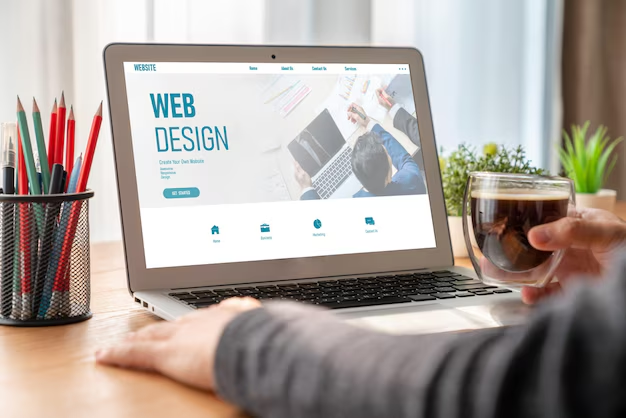Creating a website involves more than just launching a domain and uploading content. It requires a strategic blend of design and development—two distinct processes that come together to build an effective online presence. While the terms are often used interchangeably, they serve very different roles. In this guide, we’ll break down the key differences between website design & development, why both are essential, and how they contribute to your business success.
If you’re planning to launch or upgrade a site, understanding how design and development work together can help you make informed decisions. And if you’re looking for experts who provide both services under one roof, agencies like wajisolutions.com offer end-to-end solutions tailored to your brand.

Understanding Website Design
Website design is all about the look and feel of a website. It’s the creative aspect that focuses on aesthetics, branding, layout, and user experience (UX). Designers use visual tools to craft a site’s layout, color schemes, fonts, images, and interface elements that guide users through the site. The goal is to make the site visually appealing, intuitive, and aligned with the brand’s identity.
A web designer thinks like a user. They prioritize the user journey—how a visitor interacts with the website from the moment they land on it. They plan how the information will be presented, which elements will be emphasized, and how each page fits into the larger site experience. Good website design ensures that users stay longer, interact more, and convert better.
Understanding Website Development
While design shapes the visual direction of a site, development brings it to life. Website development refers to the coding and programming work that makes a website function. This includes both front-end and back-end development.
Front-end development is where the design becomes interactive. Developers take the visual layout and use languages like HTML, CSS, and JavaScript to build what users see and use. Back-end development, on the other hand, involves creating the server-side systems that handle data processing, form submissions, content management systems, user authentication, and more.
In short, development is what makes a website work beneath the surface. Without development, even the best design would just be a static image. With the right website design & development approach, you get both form and function—an attractive site that also performs efficiently.
The Collaboration Between Design and Development
The best websites are built when designers and developers collaborate from the beginning. Designers might envision certain elements or animations, but developers will know whether they are technically feasible or efficient for different devices. Similarly, developers might suggest enhancements based on technical capabilities that designers hadn’t considered.
By working together early, the team avoids disconnects that often happen when a design is handed off without context. This unified workflow results in faster project timelines, fewer revisions, and a more seamless final product.
Professional agencies like wajisolutions.com understand this dynamic. They build teams that include both creative and technical experts who communicate clearly and frequently. This ensures that the final product isn’t just beautiful—it works smoothly, loads fast, and is SEO-friendly.
Why Both Design and Development Matter for SEO
Search engines look at both the visual and technical quality of a website. Design affects user behavior—things like bounce rate, time on site, and mobile responsiveness—which are all ranking factors. If your site is hard to navigate or cluttered, users will leave, and Google will take note.
Development directly impacts performance metrics such as page speed, structured data, mobile optimization, and clean code—all of which influence how your site ranks in search results.
This is where integrated website design & development really shows its value. A well-designed site with poor development can fail to load or lag. A technically sound site with poor design may not convert visitors. Only by balancing both sides can you achieve long-term success online.
When to Prioritize Design vs Development
If you’re launching a brand-new business and have no online presence, starting with design is usually the best choice. Establishing a strong brand identity through visuals is foundational. Once you have the right look, development can begin.
However, if your current site is outdated, slow, or technically broken, development should take priority. Speed optimization, mobile responsiveness, and secure coding need to be addressed before a redesign can truly shine.
The good news is that you don’t have to choose one or the other. A holistic approach to website design & development lets you scale both sides together, ensuring your website evolves as your business grows.

FAQ: Website Design vs Development
What’s the biggest difference between website design and development?
Website design focuses on the look and user experience, while development handles the behind-the-scenes functionality that makes the site work.
Can one person do both website design and development?
Yes, but it’s rare to find someone highly skilled in both. Most professionals specialize in one area. That’s why working with a full-service agency is often the better choice.
Which is more important for SEO: design or development?
Both are equally important. Design impacts user engagement, and development affects technical performance. Together, they support strong SEO.
How do I know if my website needs a redesign or redevelopment?
If your site looks outdated but works fine, a design refresh may be enough. If it’s slow, unresponsive, or has bugs, development work is needed.
Do I need both for a landing page?
Yes. Even a simple landing page benefits from smart design to attract users and solid development to load quickly and collect leads effectively.
Conclusion
To build a modern, high-performing website, both design and development must work hand in hand. Design ensures visual appeal and user engagement, while development brings reliability, speed, and functionality. A professional approach to website design & development can transform your online presence—helping you attract more visitors, convert more leads, and grow your brand.
Whether you’re just getting started or considering a full website overhaul, choosing the right team is key. If you want experts who understand both creative direction and technical precision, consider partnering with a trusted name like wajisolutions.com for a unified solution that delivers results.





